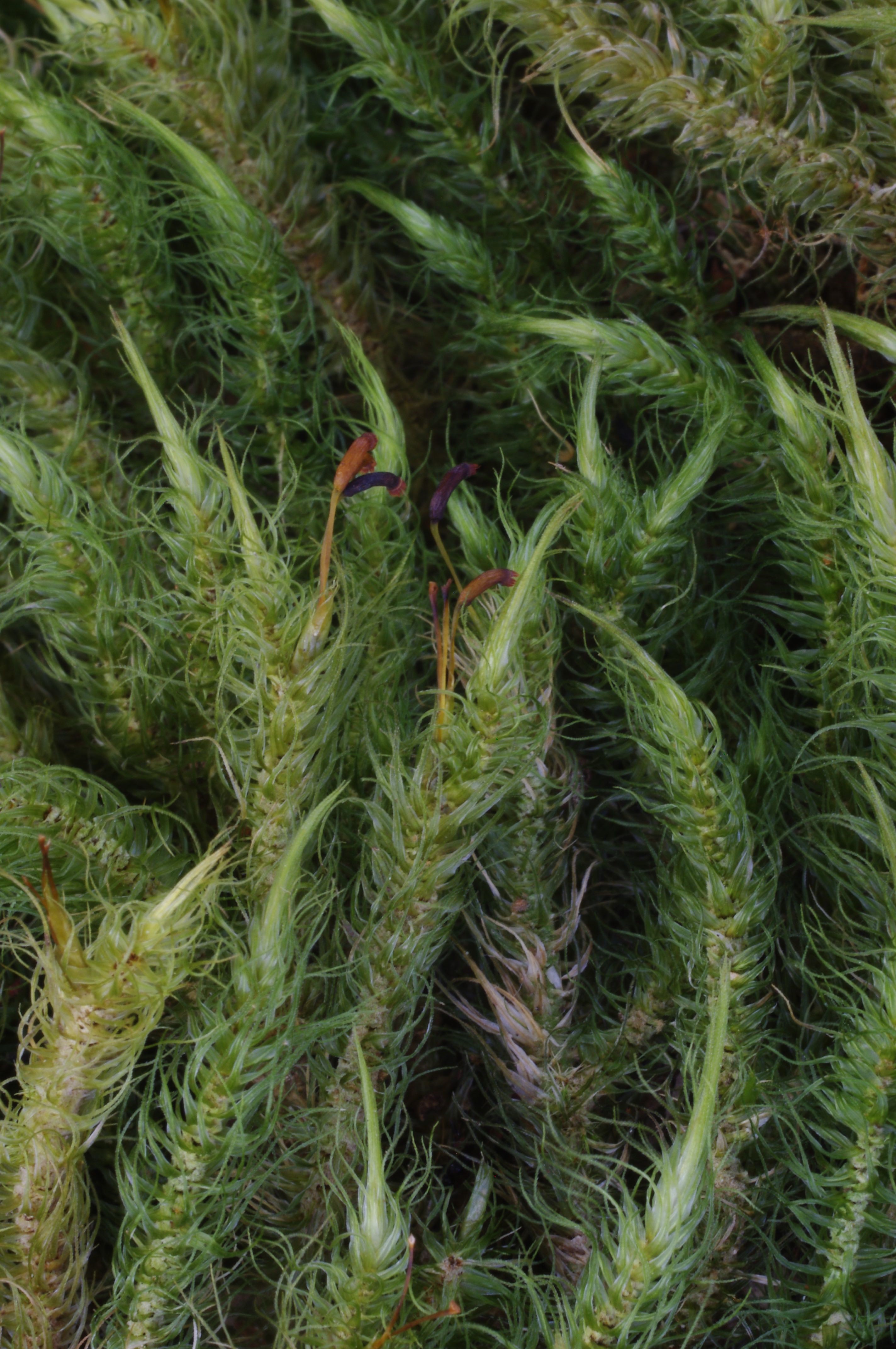Bryophyte of the Month
Dicranoloma dicarpum (Nees) Paris
Dicranoloma dicarpum was described by Christian Nees von Esenbeck in 1827 (as Dicranum dicarpum Nees) from a specimen collected in Australia by Franz Wilhelm Sieber in the Sydney region.
The plants vary in size from less than 1 cm to over 7 cm tall and are usually pale to bright green. The leaves are ovate-linear to triangular-linear, up to 12.4 mm long and 1.6 mm wide, longitudinally plicate (pleated), especially when dry, and (as in most Dicranoloma species) falcate-secund (curved to one side of the stem). The upper margins are serrate, although the teeth are often reduced. There is weak to strong border up to 4 cells wide, failing in the upper part of the leaf. The costa ends at or just below the leaf apex. Characteristically, perichaetia usually have two or more (up to 10) sporophytes, which bear curved capsules. (In other Dicranoloma species, sporophytes usually have only one or two, or occasionally three, sporophytes per perichaetia.) Except in Tasmania and New Zealand, gemmae are common in smaller plants.
Dicranoloma dicarpum has a wide habitat tolerance, growing on soil, rock, rotting logs, tree stumps, tree bases, and exposed roots and buttresses. In Australia it occurs along the eastern seaboard, from north-eastern Queensland to western Victoria, as well as Tasmania, ranging from sea level to about 1500 metres. It is also known from New Zealand, Lord Howe Island, Papua New Guinea, Vanuatu and Taiwan.
Further reading
Klazenga N 1999. A revision of the Malesian species of Dicranoloma (Dicranaceae, Musci). Journal of the Hattori Botanical Laboratory 87: 1–130.
Klazenga, N. 2003. A revisiom of the Australasian species of Dicranoloma (Bryophyta, Dicranaceae). Australian Systematic Botany 16: 427–471.
Klazenga, N 2012. Australian Mosses Online. 33. Dicranaceae: Dicranoloma. [http://www.anbg.gov.au/abrs/Mosses_online/Dicranaceae_Dicranoloma.pdf].
